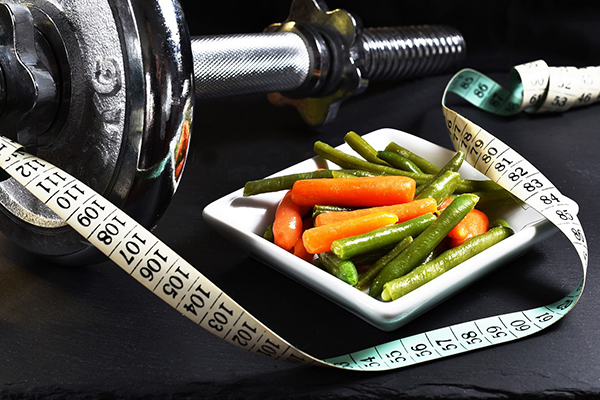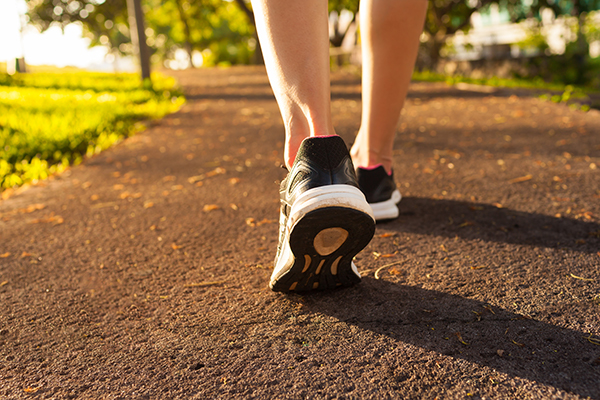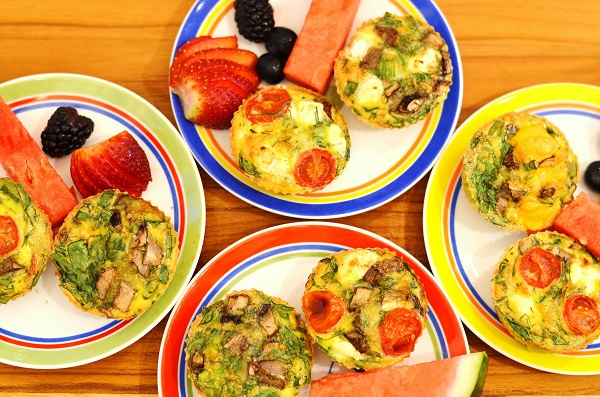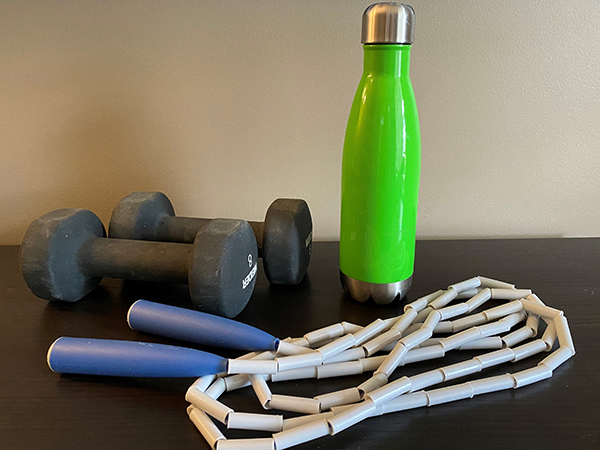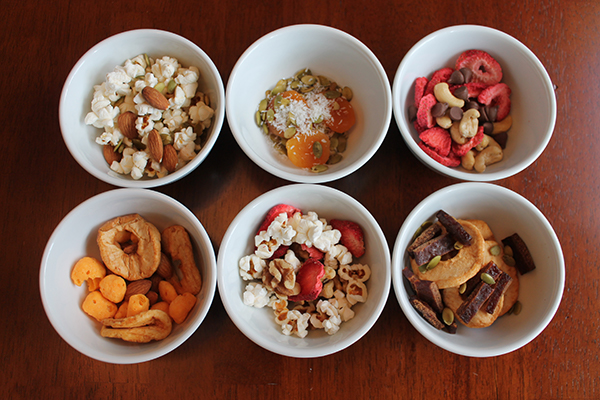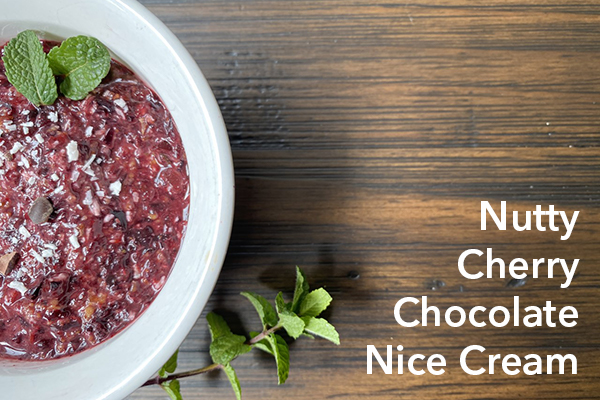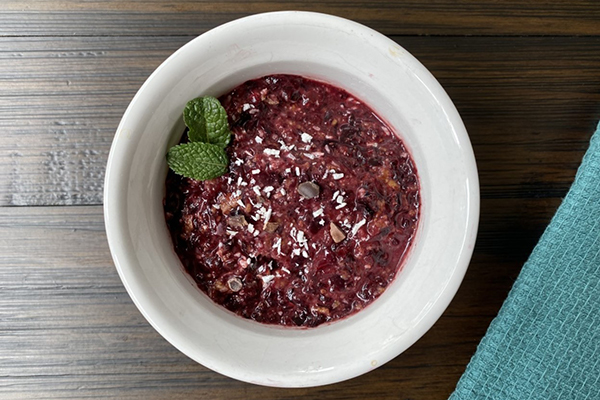Exercise and nutrition go hand-in-hand, and there is lots of conflicting advice out there about the best way to eat to power your workouts. If you’re just getting started, or getting back in the game after a fitness hiatus it’s important to separate the hype from tried and true tactics. Read on to avoid some common nutrition mistakes beginner exercisers make.
MYTH #1: Exercise can counteract an unbalanced diet.
You can’t exercise your way out of an overindulgent and unhealthy eating pattern. The idea of erasing the negative effects of eating highly-processed foods and extra helpings with another lap around the block may sound appealing, but it just doesn’t work. If you’re not getting the right nutrition, exercising won’t provide your body with the nutrients it needs to be healthy. And a slice of chocolate cake goes down a lot quicker than the 3-5 mile run it may take to burn it off. That being said, there are plenty of other reasons to exercise, so keep on moving!
The best way to support yourself nutritionally when you are increasing your physical activity is through a balanced eating pattern that focuses on plenty of water and a variety of real, whole foods that contain a balance of carbohydrates, protein and fat to keep your energy levels stable before, during and after your workouts. Too much sugar and refined carbohydrates (e.g., pasta, crackers, bread, chips) zaps energy. Removing or reducing sugar and white processed carbs can make it more likely you’ll have the energy for a workout during your day. If, like many, your breakfast is mostly carbs (e.g., toast, pancakes, waffles, cereal, oatmeal, etc.), consider changing up your tradition and include a healthy protein source in your morning meal.
MYTH #2: It’s best to be active on an empty stomach.
The best time to exercise is when you can stick with it — when you have time and when you feel good doing it. While there are some metabolic benefits to exercising in a fasted state, there are also benefits of mild to moderate activity following a meal. And many people find they have a better workout if they’ve eaten something within an hour or two of working out. If you’re not training for an endurance event or body building and don’t have specific digestive concerns, timing your movement for when it is most convenient is more important than worrying about when you last ate. If you increase your exercise duration and intensity and become more serious about training, check out some nutrition and timing recommendations to fuel your training.
MYTH #3: You should have a sports drinks during workouts.
If your workouts are less than 60 minutes or not that intense, plain old water is still the best way to hydrate. Sipping on about cup of water (8 oz.) for every 30 minutes of exercise is a good general guideline. If you’re working out at a moderate or high intensity (or in the heat and sweating quite a bit) for over an hour, then a sports drink can help you replenish the electrolytes you lose. Just watch out for the added sugars or artificial sweeteners common in many sports drinks.
MYTH #4: Post-workout protein shakes are a must.
There’s no need to schedule a high-protein feeding immediately following a workout unless you have advanced fitness goals or needs. You’ll likely be all set with a balanced meal or snack the next time you are hungry. Home-made energy bites, trail mix or the recipe below may be a perfect option to tide you over until your next meal. If, however, you are trying to increase your endurance and you are doing a long, intense workout, then it is helpful to refuel with a recovery snack that contains carbs and some protein within 30-45 minutes after working out. If your goal is to build muscle, protein is important, but so are carbohydrates and fat and taking in enough calories. The carbs and fat provide the body with the energy required for muscle cells to grow. If you are into protein shakes, consider making a smoothie with clean ingredients or mix something up with a clean, flavored powder such as Vital Whey Protein. If your goal is weight loss or maintenance, beware that some people find drinking their calories less satisfying than eating them, so be careful not to overindulge.
Take-home message
There are no hard and fast rules for how every single person should eat to support increased activity. Instead it’s best to make the changes that work for your body and lifestyle. Rely on nutrition basics along with your energy levels and digestive reactions to guide you to better health as you engage in your fitness journey. Save the foods/beverages marketed to athletes and the prescriptive pre- and post-workout snack schedules to those who are endurance training and body building.
Increasing your physical activity? Separate nutrition hype from solid strategies. #saslife Click To TweetNutty Cherry Chocolate Nice Cream
Makes 1 serving
PRINT RECIPE
Ingredients
1 cup frozen cherries, preferably organic
1 Tbsp almond butter
1 tsp cacao nibs
1 tsp shredded unsweetened coconut
½ scoop plain protein powder or collagen peptides, such as Tera's Whey Grass Fed Organic Whey Protein Plain or Vital Proteins Collagen Peptides
Splash of milk of choice (about 1 Tbsp)
Directions
- Add ingredients to a blender or food processor and blend.
- Scrape sides as needed and add additional milk to reach desired consistency. (I like mine chunky, so I don’t use much milk.)
Notes
- Keep it simple! Don’t want to deal with the blender? This recipe tastes equally good when milk and protein powder are omitted and the remaining ingredients are simply mashed together with a spoon in a mug.
- Doubling, tripling or quadrupling the recipe may make blending easier. Freezes well.
